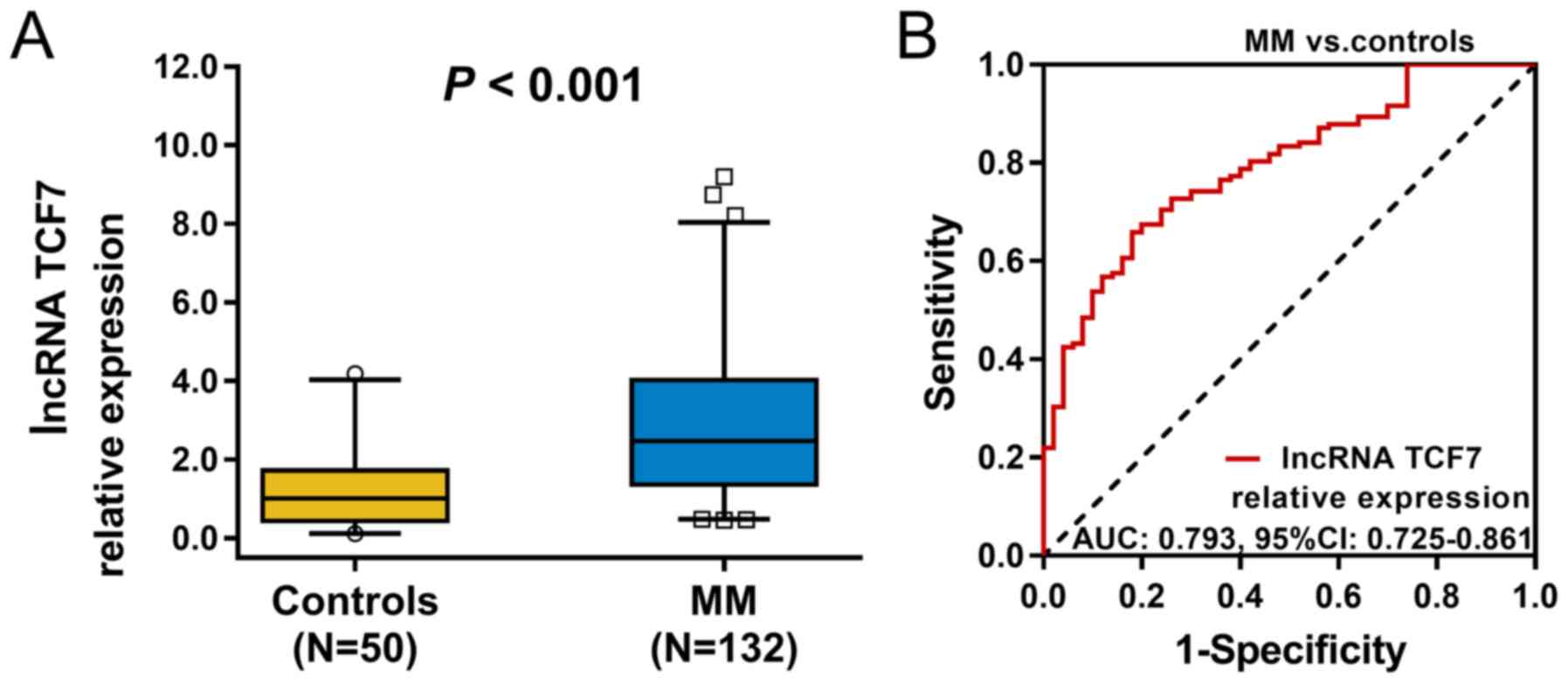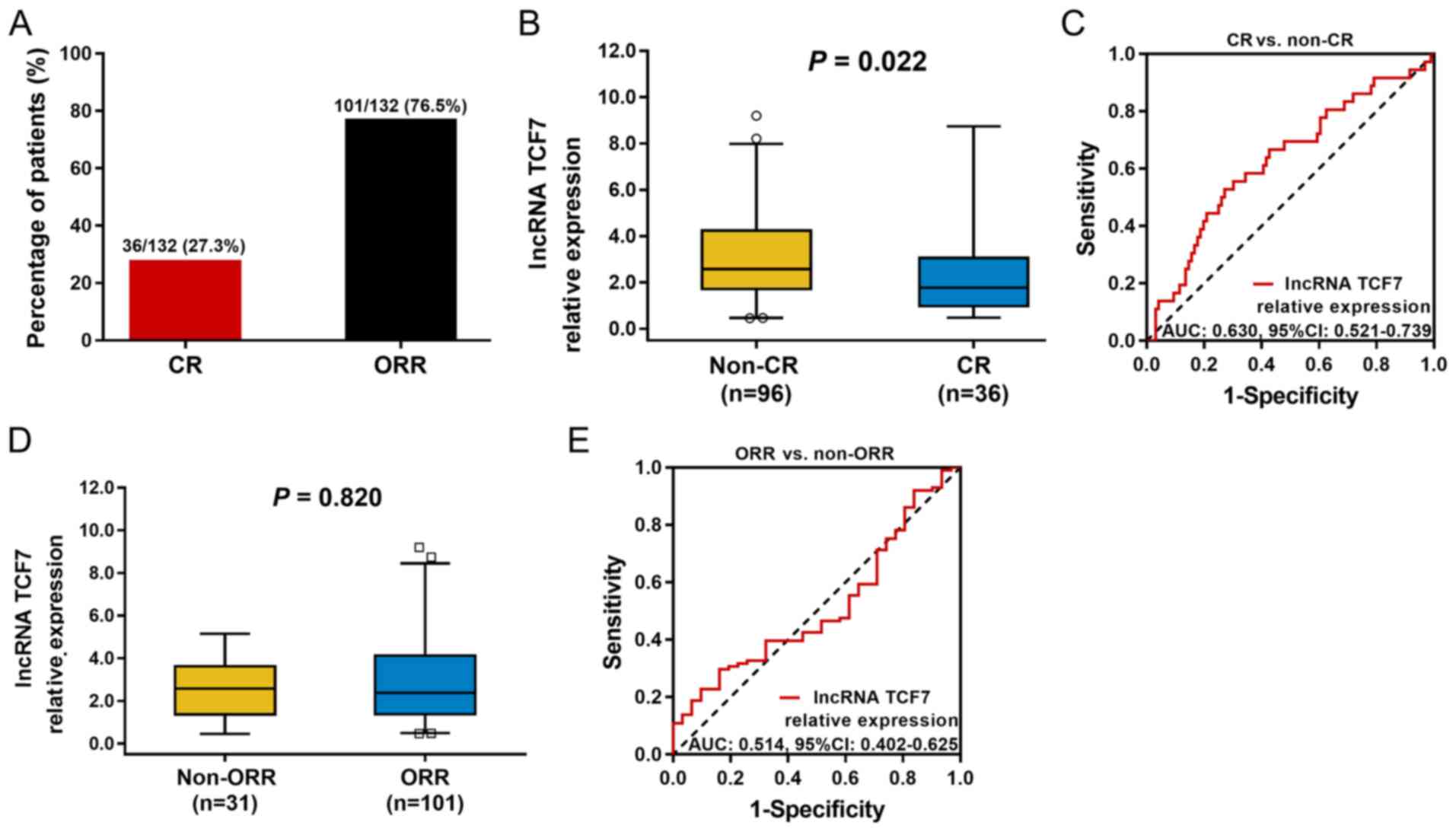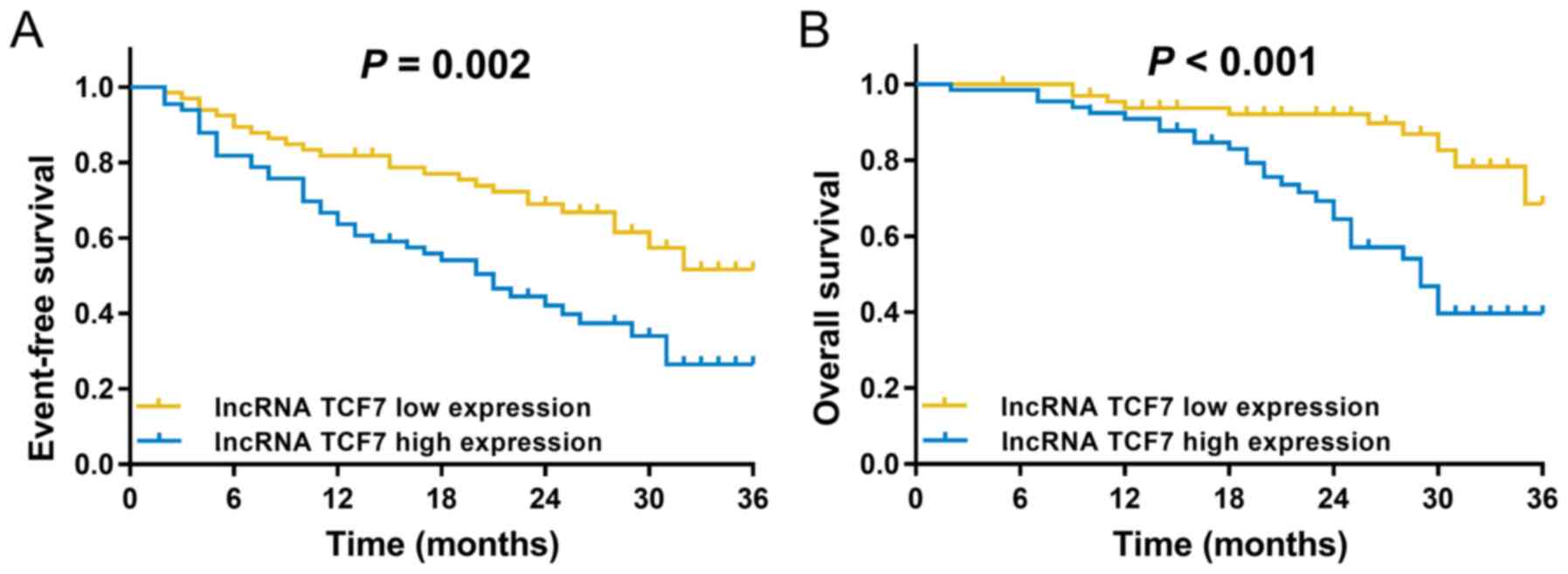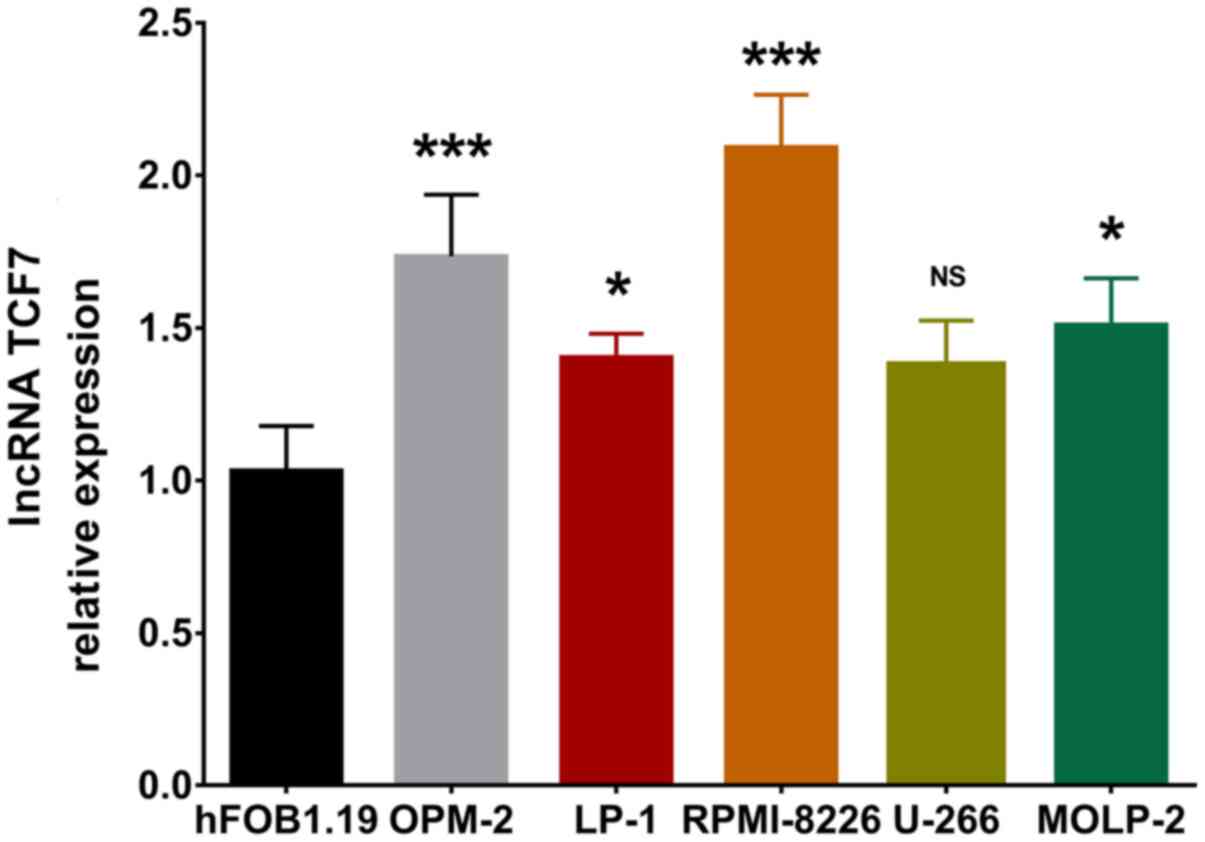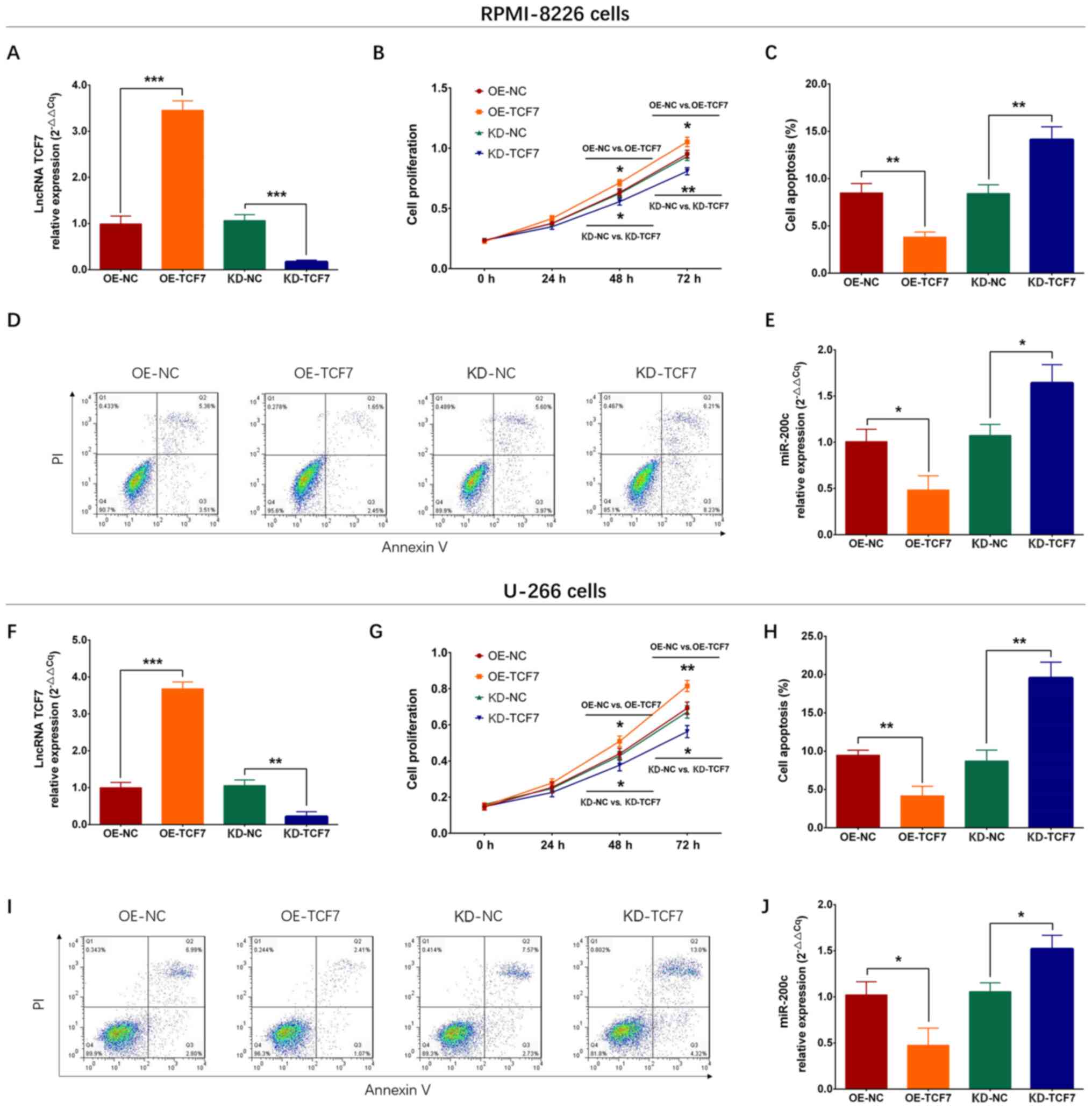|
1
|
Rollig C, Knop S and Bornhauser M:
Multiple myeloma. Lancet. 385:2197–2208. 2015. View Article : Google Scholar
|
|
2
|
Liu H, Xu R and Huang H: Peripheral
neuropathy outcomes and efficacy of subcutaneous bortezomib when
combined with thalidomide and dexamethasone in the treatment of
multiple myeloma. Exp Ther Med. 12:3041–3046. 2016. View Article : Google Scholar
|
|
3
|
Sun Y, Pan J, Zhang N, Wei W, Yu S and Ai
L: Knockdown of long non-coding RNA H19 inhibits multiple myeloma
cell growth via NF-κB pathway. Sci Rep. 7:180792017. View Article : Google Scholar
|
|
4
|
Pawlyn C and Morgan GJ: Evolutionary
biology of high-risk multiple myeloma. Nat Rev Cancer. 17:543–556.
2017. View Article : Google Scholar
|
|
5
|
Pawlyn C and Davies FE: Toward
personalized treatment in multiple myeloma based on molecular
characteristics. Blood. 133:660–675. 2019. View Article : Google Scholar
|
|
6
|
Butova R, Vychytilova-Faltejskova P,
Souckova A, Sevcikova S and Hajek R: Long non-coding RNAs in
multiple myeloma. Noncoding RNA. 5:132019.
|
|
7
|
Amodio N, Stamato MA, Juli G, Morelli E,
Fulciniti M, Manzoni M, Taiana E, Agnelli L, Cantafio MEG, Romeo E,
et al: Drugging the lncRNA MALAT1 via LNA gapmeR ASO inhibits gene
expression of proteasome subunits and triggers anti-multiple
myeloma activity. Leukemia. 32:1948–1957. 2018. View Article : Google Scholar
|
|
8
|
Gu Y, Xiao X and Yang S: LncRNA MALAT1
acts as an oncogene in multiple myeloma through sponging miR-509-5p
to modulate FOXP1 expression. Oncotarget. 8:101984–101993. 2017.
View Article : Google Scholar
|
|
9
|
Wu B, Chen M, Gao M, Cong Y, Jiang L, Wei
J and Huang J: Down-regulation of lncTCF7 inhibits cell migration
and invasion in colorectal cancer via inhibiting TCF7 expression.
Hum Cell. 32:31–40. 2019. View Article : Google Scholar
|
|
10
|
Jin FS, Wang HM and Song XY: Long
non-coding RNA TCF7 predicts the progression and facilitates the
growth and metastasis of colorectal cancer. Mol Med Rep.
17:6902–6908. 2018.
|
|
11
|
Zhao J, Zhang L, Zheng L, Hong Y and Zhao
L: LncRNATCF7 promotes the growth and self-renewal of glioma cells
via suppressing the miR-200c-EpCAM axis. Biomed Pharmacother.
97:203–208. 2018. View Article : Google Scholar
|
|
12
|
Wang Y, He L, Du Y, Zhu P, Huang G, Luo J,
Yan X, Ye B, Li C, Xia P, et al: The long noncoding RNA lncTCF7
promotes self-renewal of human liver cancer stem cells through
activation of Wnt signaling. Cell Stem Cell. 16:413–425. 2015.
View Article : Google Scholar
|
|
13
|
Spaan I, Raymakers RA, van de Stolpe A and
Peperzak V: Wnt signaling in multiple myeloma: A central player in
disease with therapeutic potential. J Hematol Oncol. 11:672018.
View Article : Google Scholar
|
|
14
|
Ludwig H, Miguel JS, Dimopoulos MA,
Palumbo A, Garcia Sanz R, Powles R, Lentzsch S, Ming Chen W, Hou J,
Jurczyszyn A, et al: International myeloma working group
recommendations for global myeloma care. Leukemia. 28:981–992.
2014. View Article : Google Scholar
|
|
15
|
Ross FM, Avet-Loiseau H, Ameye G,
Gutiérrez NC, Liebisch P, O'Connor S, Dalva K, Fabris S, Testi AM,
Jarasova M, et al: Report from the European Myeloma Network on
interphase FISH in multiple myeloma and related disorders.
Haematologica. 97:1272–1277. 2012. View Article : Google Scholar
|
|
16
|
Durie BG and Salmon SE: A clinical staging
system for multiple myeloma. Correlation of measured myeloma cell
mass with presenting clinical features, response to treatment, and
survival. Cancer. 36:842–854. 1975. View Article : Google Scholar
|
|
17
|
Greipp PR, San Miguel J, Durie BG, Crowley
JJ, Barlogie B, Bladé J, Boccadoro M, Child JA, Avet-Loiseau H,
Kyle RA, et al: International staging system for multiple myeloma.
J Clin Oncol. 23:3412–3420. 2005. View Article : Google Scholar
|
|
18
|
National Comprehensive Cancer Network, .
NCCN Clinical Practice Guidelines in Oncology (NCCN
Guidelines®). Acute Myeloid Leukemia. Version 2. NCCN,
Inc.; 2014, simplehttps://www2.tri-kobe.org/nccn/guideline/hematologic/english/aml.pdf
|
|
19
|
Ghodousi ES and Rahgozar S: MicroRNA-326
and microRNA-200c: Two novel biomarkers for diagnosis and prognosis
of pediatric acute lymphoblastic leukemia. J Cell Biochem.
119:6024–6032. 2018. View Article : Google Scholar
|
|
20
|
Livak KJ and Schmittgen TD: Analysis of
relative gene expression data using real-time quantitative PCR and
the 2(-Delta Delta C(T)) method. Methods. 25:402–408. 2001.
View Article : Google Scholar
|
|
21
|
van Andel H, Kocemba KA, Spaargaren M and
Pals ST: Aberrant Wnt signaling in multiple myeloma: Molecular
mechanisms and targeting options. Leukemia. 33:1063–1075. 2019.
View Article : Google Scholar
|
|
22
|
Nagoshi H, Taki T, Hanamura I, Nitta M,
Otsuki T, Nishida K, Okuda K, Sakamoto N, Kobayashi S,
Yamamoto-Sugitani M, et al: Frequent PVT1 rearrangement and novel
chimeric genes PVT1-NBEA and PVT1-WWOX occur in multiple myeloma
with 8q24 abnormality. Cancer Res. 72:4954–4962. 2012. View Article : Google Scholar
|
|
23
|
Brigle K and Rogers B: Pathobiology and
diagnosis of multiple myeloma. Semin Oncol Nurs. 33:225–236. 2017.
View Article : Google Scholar
|
|
24
|
Paiva B, van Dongen JJ and Orfao A: New
criteria for response assessment: Role of minimal residual disease
in multiple myeloma. Blood. 125:3059–3068. 2015. View Article : Google Scholar
|
|
25
|
Shen X, Zhang Y, Wu X, Guo Y, Shi W, Qi J,
Cong H, Wang X, Wu X and Ju S: Upregulated lncRNA-PCAT1 is closely
related to clinical diagnosis of multiple myeloma as a predictive
biomarker in serum. Cancer Biomark. 18:257–263. 2017. View Article : Google Scholar
|
|
26
|
Isin M, Ozgur E, Cetin G, Erten N, Aktan
M, Gezer U and Dalay N: Investigation of circulating lncRNAs in
B-cell neoplasms. Clin Chim Acta. 431:255–259. 2014. View Article : Google Scholar
|
|
27
|
Meng YB, He X, Huang YF, Wu QN, Zhou YC
and Hao DJ: Long noncoding RNA CRNDE promotes multiple myeloma cell
growth by suppressing miR-451. Oncol Res. 25:1207–1214. 2017.
View Article : Google Scholar
|
|
28
|
Handa H, Kuroda Y, Kimura K, Masuda Y,
Hattori H, Alkebsi L, Matsumoto M, Kasamatsu T, Kobayashi N, Tahara
KI, et al: Long non-coding RNA MALAT1 is an inducible stress
response gene associated with extramedullary spread and poor
prognosis of multiple myeloma. Br J Haematol. 179:449–460. 2017.
View Article : Google Scholar
|
|
29
|
Shen X, Bai H, Zhu H, Yan Q, Yang Y, Yu W,
Shi Q, Wang J, Li J and Chen L: Long non-coding RNA MEG3 functions
as a competing endogenous RNA to regulate HOXA11 expression by
sponging miR-181a in multiple myeloma. Cell Physiol Biochem.
49:87–100. 2018. View Article : Google Scholar
|
|
30
|
Wu J and Wang D: Long noncoding RNA TCF7
promotes invasiveness and self-renewal of human non-small cell lung
cancer cells. Hum Cell. 30:23–29. 2017. View Article : Google Scholar
|
|
31
|
Bi C, Chung TH, Huang G, Zhou J, Yan J,
Ahmann GJ, Fonseca R and Chng WJ: Genome-wide pharmacologic
unmasking identifies tumor suppressive microRNAs in multiple
myeloma. Oncotarget. 6:26508–26518. 2015. View Article : Google Scholar
|
|
32
|
Pour L, Sevcikova S, Greslikova H, Kupska
R, Majkova P, Zahradova L, Sandecka V, Adam Z, Krejci M, Kuglik P
and Hajek R: Soft-tissue extramedullary multiple myeloma prognosis
is significantly worse in comparison to bone-related extramedullary
relapse. Haematologica. 99:360–364. 2014. View Article : Google Scholar
|
















